This is a review of the best plastic-free coffee makers for home use. Keep reading to find out best picks.
I’ve always hated the taste of chemicals leaking into my coffee. Because of this, I went on a journey to find all the best plastic- and toxic-free coffee makers.
I chose the Breville Grind Control as the number one choice because it has a robust built, built-in grinder, and a narrow width (ideal for small kitchens).
You may not find the price point appearling. Or the fact it can’t brew espresso. I’ve provided many alternatives throughout this guide.
Read on. We have much to cover.
Top 9 Non-Toxic Coffee Makers
- Breville Grind Control Coffee: Best plastic-free & BPA-free maker
- Bialetti Moka Pot: Best budget maker
- Farberware Percolator: Best for beginners
- Breville Barista Express: Best machine with grinder
- Maranello Caffe: Includes built-in filter
- Cuisinart DCC-3200P1: Best plastic-free electric maker
- Hario V60: Most compact
- COLETTI Boulder: Best no-plastic French press
- Chemex: Best coffee maker, UK
9 Best BPA-Free Coffee Makers for Home Use
Most coffee makers don’t include BPA. But many may be made of plastic. And even if they’re made of metal, it may leech into your coffee and produce a metallic taste.
Some manufacturers don’t provide BPA-free information. Hence, why this guide focuses on non-toxic coffee makers.
Once reading through all these mini-reviews, you’ll learn how to shop for the best coffee maker.
1. Breville Grind Control Coffee: Best Overall Non-Toxic Coffee Maker
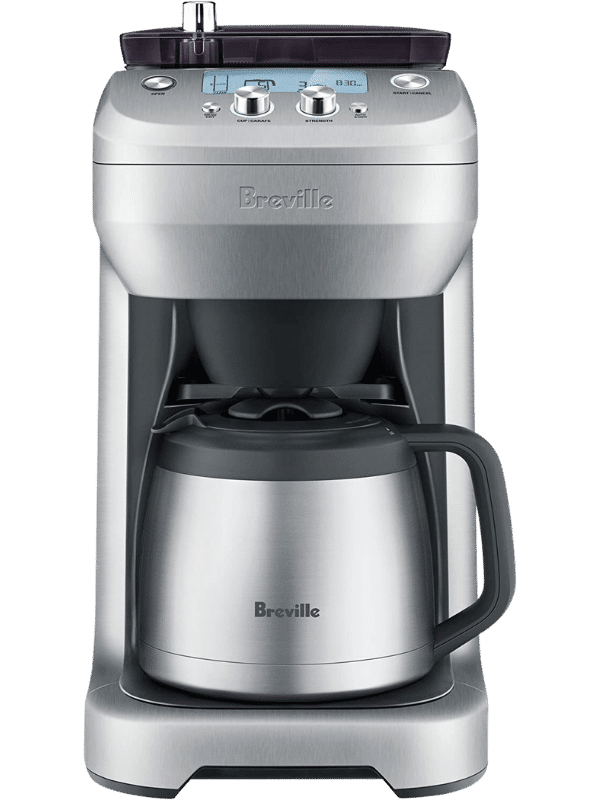
| Price * | $$$ |
| Machine Type | Thermal coffee maker |
| Dimensions | 12.5 × 8.5 × 16.3 in (D, W, H) |
| Water Reservoir Size | 60.9 fl oz = 10 6-fl oz cups |
| Material | Stainless steel |
| Warranty | 1 year |
Pros
- Brews fresh, aromatic coffee consistently.
- Offers grind settings & strength options.
- Features a programmable auto-start.
Cons
- Requires regular cleaning for smooth operation.
- Grinder can’t be used for other applications.
The Breville Grind Control Coffee Maker stands out as the best plastic-free drip coffee maker due to its advanced features and high-quality construction.
A thermal coffee maker is a drip coffee maker with a twist. First, this coffee maker pours hot water through a coffee filter filled with beans. From there, the resulting black coffee drips into a thermal carafe.
Unlike glass coffee pots, these keep your drinks hot for hours without a warming plate. Great for having hot coffee throughout the day.
Despite its higher price point, it provides exceptional performance and versatility, with customizable features such as grind profile and strength options. Both offer ways to tailor drinks to your preference.
The built-in stainless steel conical grinder will provide more consistent bean grinds than makers with blade grinders. However, they’re not as good as flat ceramic grinders, which would make this machine cost much more.
Flat-shaped grinders have even more consistent grinds. And ceramic grinds don’t heat up fast like stainless steel ones, which won’t result in flavor loss.
Since it’s a built-in grinder, you can’t use it for any other coffee makers in your home. A disadvantage of not buying a separate one. And the increased height due to the machine may make it unideal for folks with low-hanging wall cabinets.
All the options included give you a lot of control over your drink. Want to program it to start in the morning while getting ready for work? It can do that. The Strength button allows you to make the machine brew slower for stronger-tasting flavor.
Since it’ll have more time to extract flavor.
2. Bialetti Moka Pot: Best Budget Non-plastic Coffee Maker
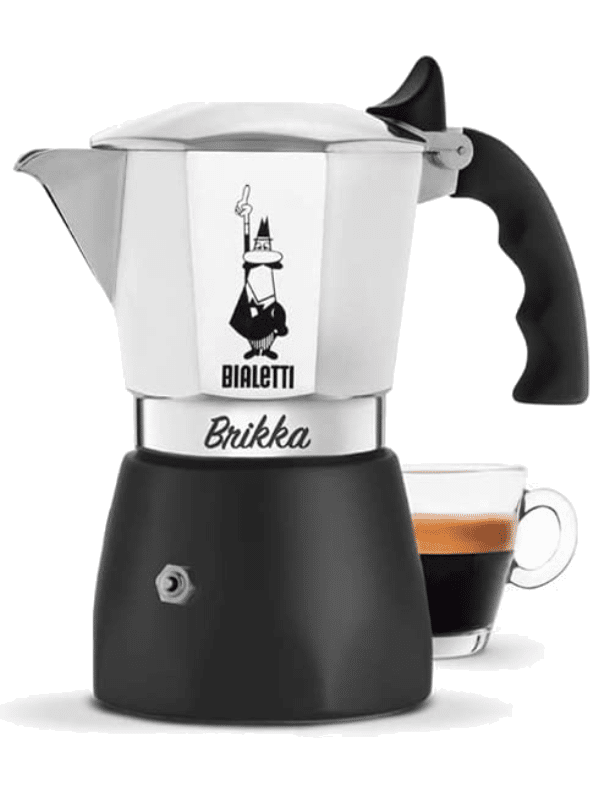
| Machine Type | Stovetop coffee maker |
| Dimensions | 5.51 × 3.94 × 6.69 in (D, W, H) |
| Water Reservoir Size | 1–12 cups |
| Material | Aluminum |
| Warranty | 2 years |
Pros
- Produces rich, strong coffee.
- Easy to use once familiar.
- More affordable than other coffee equipment.
Cons
- Doesn’t work on induction ovens.
- Needs monitoring during brewing.
- Cleaning involves more effort.
The Bialetti Moka Pot perfectly matches the adventurous soul who enjoys brewing coffee in the great outdoors. As it’s durable and doesn’t require electricity.
Its compact design also makes it a favorite among those living in small spaces, like studio apartments or dorm rooms.
This is a stovetop coffee maker. It brews concentrated coffee using pressure to produce steam from water at the container’s bottom. It requires a stovetop, though. Which could prove beneficial if you’re camping.
And unlike most coffee makers, it requires fine grinds like espresso machines.
As for its value, the Moka Pot is worth the price. Its robust construction ensures longevity, and other coffee makers can’t replicate Bialetti’s unique brewing process.
There aren’t any spectacular features with the Bialetti. It lasts a long time and makes great-tasting coffee. However, all the components make the maker more challenging to clean. You must disassemble everything.
Due to this doohickey having an aluminum casing, it won’t work on an induction oven. Aluminum isn’t magnetic. An induction stovetop requires magnetic pots and whatever to boil water. Can you guess what happens when you put the Moka Pot on this oven type?
Nothing.
And while brewing, you must constantly monitor it to ensure you don’t burn your coffee. It’ll become much easier to use as you familiarize yourself with this coffee maker. You’ll likely eventually know how long it’ll take to brew. Thus, you could walk away for a second.
3. Farberware 2-4-Cup Electric Percolator: Best BPA-Free Coffee Maker for Beginners
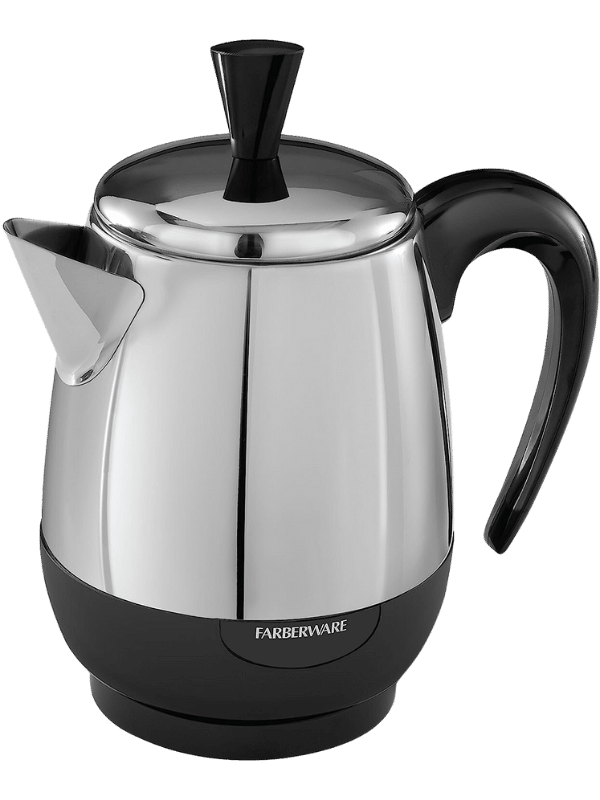
| Price * | $$ |
| Machine Type | Percolator |
| Dimensions | 8 × 5.3 × 8.8 in (D, W, H) |
| Water Reservoir Size | 2-4 cups |
| Material | Stainless steel |
| Warranty | 1 year |
Pros
- Stainless steel construction ensures durability & easy cleaning.
- Plastic handles prevent burns & base protects countertops.
- Balanced handle allows smooth pouring.
Cons
- Plastic lid handle isn’t durable.
- Short cord limits placement options.
- Percolator is somewhat noisy.
The Farberware Electric Percolator is ideal for those who prefer stainless steel appliances for their durability and ease of cleaning.
A percolator works like a Moka Pot (stovetop) but produces much more coffee. Making it ideal for serving groups of people and entertaining guests.
Considering its high-quality construction, the ability to keep coffee warm for extended periods, and the superior taste it delivers, it’s worth the price.
The Farberware 2–4-cup has an automatic warming feature that acts as a warming plate to keep your drink warm after brewing. Great for having a drink that’s warm throughout the day. However, the stainless steel body will also keep your drink warm.
All the downsides of this machine come from some design choices. It has a short handle, which may require an extension cord. And the plastic handle won’t last as long as stainless steel ones.
But it’ll protect your hand from burns since you won’t have heat transferring to your percolator’s handle. The plastic base will also help protect your countertop from becoming burnt.
However, it’s a noisy machine. Not great for brewing coffee when other people are trying to sleep.
Despite having a fragile handle, the stainless steel body will outlast most coffee makers on this list. These types of coffee makers tend to last over 10 years.
4. Breville Barista Express: Best BPA-Free Coffee Maker With Grinder
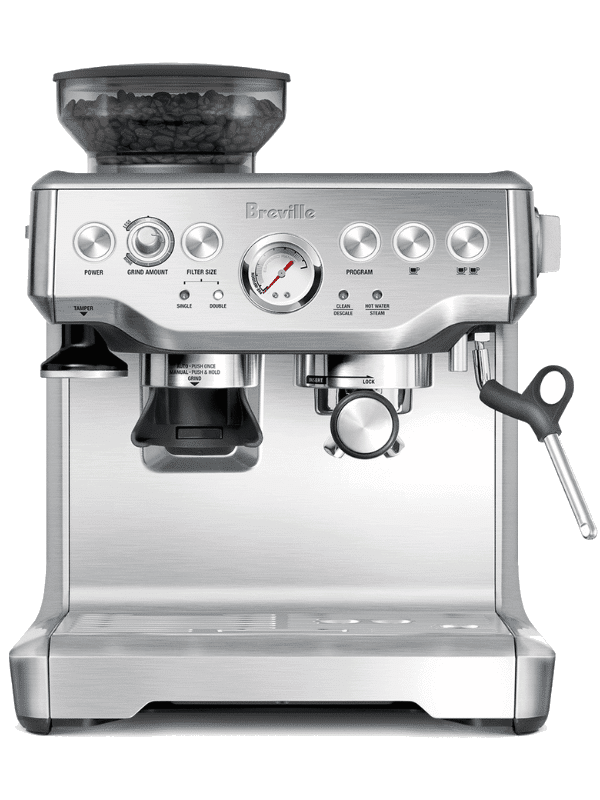
| Price * | $$$ |
| Machine Type | Automatic espresso maker |
| Dimensions | 12.5 × 13.5 × 16 in (D, W, H) |
| Water Reservoir Size | 67.6 fl oz = 67 solo shots |
| Material | Stainless steel |
| Warranty | 1 year |
Pros
- Features built-in conical burr grinder.
- Offers digital temperature control.
- Comes with adjustable grind size.
Cons
- Considered expensive for some users.
- Lacks milk frothing temperature control.
- Requires frequent water reservoir refills.
The Breville Barista Express is a superb all stainless steel coffee maker with no plastic for coffee enthusiasts who crave café-quality espresso at home.
An automatic espresso machine automates most aspects of espresso-making, except for tamping and grinding. Excellent for producing espresso drinks without focusing too much time on brewing.
Its stainless steel construction ensures durability, while the flexibility of automatic to fully manual brewing options allows for skill growth. Making it ideal for those who love espresso.
And for anyone who likes lattes and cappuccinos. Since it has a built-in milk frother. The integrated stainless steel conical grinder is a nice addition as well. It allows you to grind coffee beans without maintaining a separate machine.
However:
Steel burrs warm fast and can ruin your bean’s flavor from the resulting heat. But the pre-infusion system makes up for that. It gradually applies water to coffee beans to help ensure even flavor extraction.
The Express uses a single boiler, which means you can’t brew coffee and froth milk simultaneously. Usually, it would also mean it takes longer to heat the machine. However, the thermocoil heating system makes it take less than a minute to heat.
Great for making drinks quickly.
The PID temperature control will detect and minimize temperature fluctuations during brewing. Ensuring consistent temperatures and drink taste. But this perk doesn’t extend to the milk frother.
The Express isn’t the greatest choice if you don’t want to frequently refill the water reservoir. It’s not the biggest—considering the machine’s cost.
5. Maranello Caffé Pour Over : Best No-plastic Coffee Maker with Filter
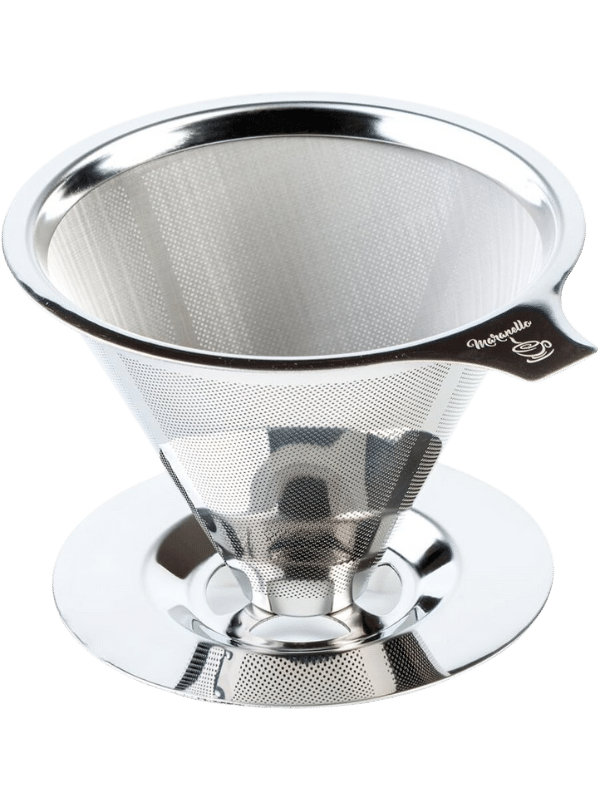
| Price * | $ |
| Machine Type | Pour-over |
| Dimensions | 5.25 × 5.25 × 3.75 in (D, W, H) |
| Water Reservoir Size | NA |
| Material | Stainless steel body & filter |
| Warranty | Lifetime |
Pros
- Eliminates the need for disposable filters.
- Compact size, ideal for small kitchens.
- Produces high-quality coffee.
Cons
- Requires frequent, intensive cleaning.
- Grounds can escape into coffee.
- Not suitable for rough handling or travel.
The Maranello Caffé Pour Over is a perfect match for eco-conscious coffee lovers who appreciate a minimalist kitchen setup. That’s thanks to its compact design and reusable filter.
Pour-over coffee makers are manual drip coffee makers. You have a cone-shaped or flat-bottomed device that requires a paper or reusable filter. Put your beans in, pour water over those beans, and watch as coffee drips into your cup.
The Maranello’s reusable filter and low upfront cost will prove its worth by saving you a bit of money upfront.
The only feature that comes to mind is the reusable metal filter. This prevents you from needing to buy single-use paper filters. However, unlike paper filters, the mesh has more areas for fine coffee grounds to escape.
Thus, you may get grainy coffee.
These types of coffee makers require coarse grounds, anyway. And since it’s a manual coffee maker, you retain more control over making your drink, which can lead to satisfying your taste preferences.
You get more control since you can control the flow of water, whether you pre-wet beans, and more. All of which help extract more flavors.
It’s also tiny and metal. Making it perfect for traveling.
6. Cuisinart DCC-3200P1: Best Plastic-free Electric Coffee Maker
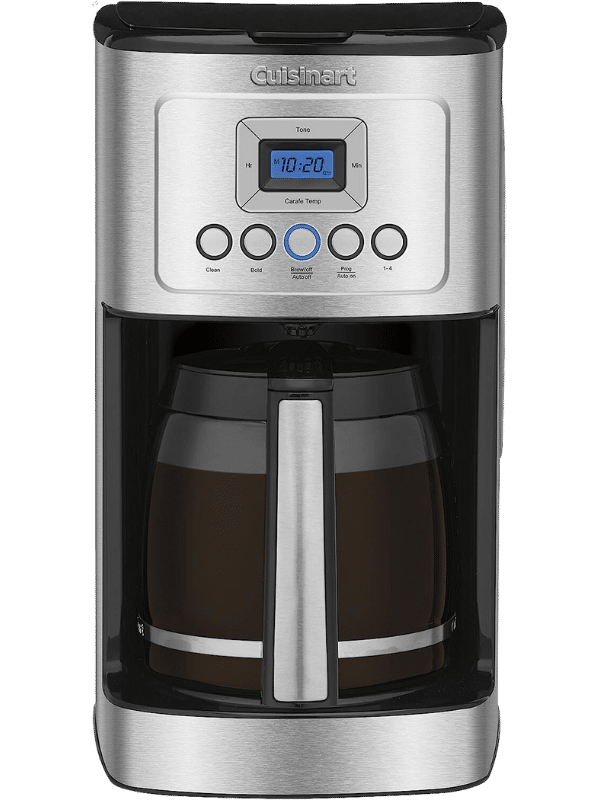
| Price * | $$ |
| Machine Type | Drip coffee maker |
| Dimensions | 7.75 × 9 × 14 in (D, W, H) |
| Water Reservoir Size | 70 fl oz = 11 cups |
| Material | Stainless steel & glass |
| Warranty | Lifetime (US & Canada) 3 years elsewhere |
Pros
- Brews flavorful coffee.
- Offers three temperature settings.
- Comes with a large 14-cup capacity.
Cons
- Carafe leaks when pouring.
- Grounds can overflow if too much coffee is used.
- Difficulty in pouring out the last cup of coffee.
The Cuisinart DCC-3200P1 stands out as the best BPA-free Cuisinart coffee maker due to its high-quality, durable materials and 14-cup capacity. It’s perfect for coffee lovers seeking a reliable, large-capacity machine that delivers consistently hot coffee.
This drip coffee maker’ll produce hot coffee in a glass carafe by dripping coffee from a paper filter filled with medium-ground coffee.
Considering its features and performance, the Cuisinart DCC-3200P1 is worth the price. It offers user-friendly setup, programmability, and a thermal carafe that keeps coffee warm for up to 8 hours.
The programmable buttons allow you to set when to brew your coffee and at what strength. A great way to brew coffee whenever you don’t have time to monitor your machine.
Despite having a 14-cup capacity—great for large groups—it doesn’t have the best design. The lid may not fit over the carafe well, which could result in leaks when pouring. Or the carafe overflowing.
However, what carafe won’t overflow when you brew too much coffee?
You’ll also prevent overflowing by not putting a ridiculous amount of water in the reservoir. Fill it with what you know you’ll drink.
And due to the way the carafe’s spout location, you may find it difficult (almost impossible) to pour out a small amount of coffee. Bad for those who want to utilize every last drop.
7. Hario V60: Best Small Non-plastic Coffee Maker
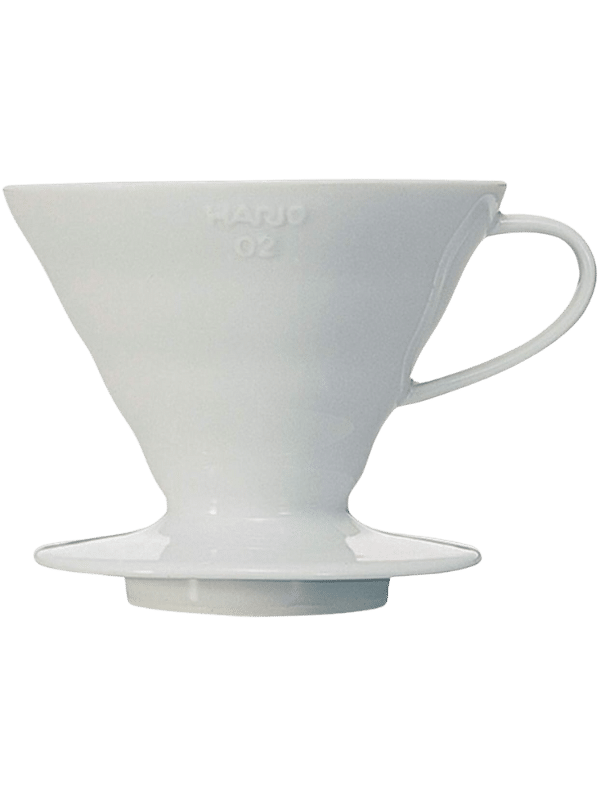
| Price * | $ |
| Machine Type | Pour-over |
| Dimensions | 4.7 × 5.5 × 4 in (D, W, H) |
| Water Reservoir Size | NA |
| Material | Stainless steel, glass, or ceramic (your choice) |
| Warranty | 1 year |
Pros
- Allows for precise brewing control.
- Offers a wide range of product options.
- Features an upgraded design for improved airflow.
Cons
- Has a steep learning curve.
- Requires undivided attention during the brewing process.
- Fragile ceramic construction not suitable for travel.
The Hario V60 is ideal for the coffee connoisseur who enjoys the hands-on process and has the patience to refine their skills.
Remember the pour-over coffee maker I covered earlier? This is similar. You insert a paper filter, then your beans, and pour water over them. From there, you have great-tasting coffee. These have a steep learning curve, though.
You’ll need to find a great pouring technique and the best bean size to use. This will require a lot of attention to ensure you do things right.
Its affordability and the potential to produce a high-quality brew make it a cost-effective choice.
Hario, unlike the previous coffee maker, costs less, offers more color choices, and allows you to choose among stainless steel, glass, and ceramic. The first material’s best for traveling. The second is to have a clean taste. And the third mixes both benefits.
There are also 2 size choices. Size 02 holds more coffee beans, better for serving up to 4 cups. 01 works better for 1–2 cups.
The V60 works better than its counterpart due to having a bigger hole, allowing for more airflow. Leading to better flavor extraction.
8. COLETTI Boulder: Best Plastic-free French Press
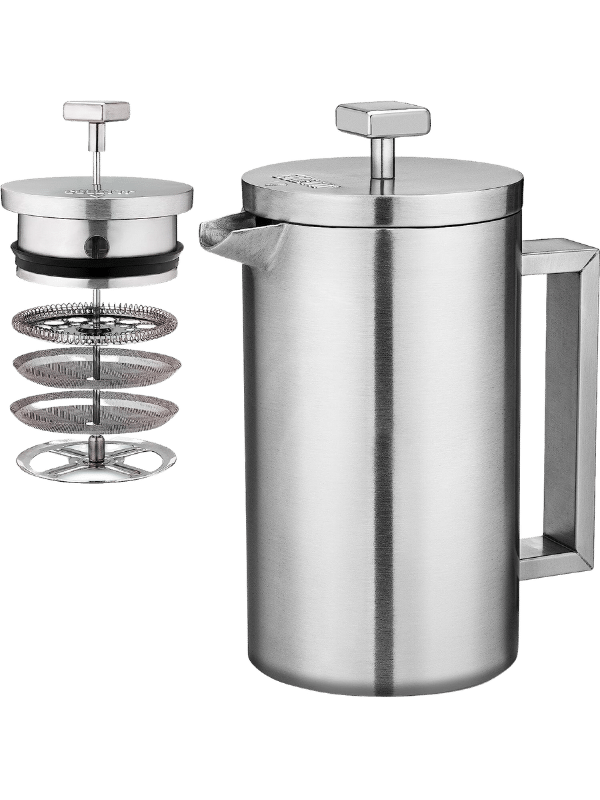
| Price * | $$ |
| Machine Type | French press |
| Dimensions | 4.5 × 7 × 9.25 in (D, W, H) |
| Water Reservoir Size | 42 fl oz = 10 cups |
| Material | Stainless steel |
| Warranty | 1 year |
Pros
- Keeps coffee hot for hours.
- Produces a large amount of coffee.
- Offers a lifetime replacement guarantee.
Cons
- Requires pre-heating for optimal heat retention.
- Heavy, not ideal for long-distance hiking.
- Plunger doesn’t disassemble for thorough cleaning.
The COLETTI Boulder is the ideal choice for someone seeking a robust and efficient French press coffee maker.
It’s a French press coffee maker. You put beans in the coffee maker and pour hot water over it. From there, you use a plunger to press down and fully immerse the beans. It’s a great way to brew strong coffee.
Not only does it offer superior insulation and a generous 42-ounce capacity, but it also comes with a lifetime replacement guarantee. This French press is designed to last due to its stainless steel body and components.
Stainless steel lasts much longer than plastic and glass due to its ability to withstand wear and tear. However, the metal body makes the machine much heavier. It’s ideal for hiking and camping due to its robust design. But not ideal for long-haul hikes due to its weight.
Its vacuum insulation keeps coffee hot for over 4 hours, and its sturdy stainless steel construction ensures durability and longevity. However, you must pre-heat the machine in order to keep it hot.
Usually French presses aren’t difficult to clean. This one’s different. As it’s more difficult to disassemble to deep clean.
Otherwise, the lifetime replacement guarantee. Their website says 1 year warranty then a lifetime replacement guarantee. A bit confusing, but there’s no way they wouldn’t honor the lifetime replacement.
And this coffee maker’s great for serving crowds hot coffee and cold brew due to its large size.
9. Chemex: Best BPA-Free Coffee Maker UK
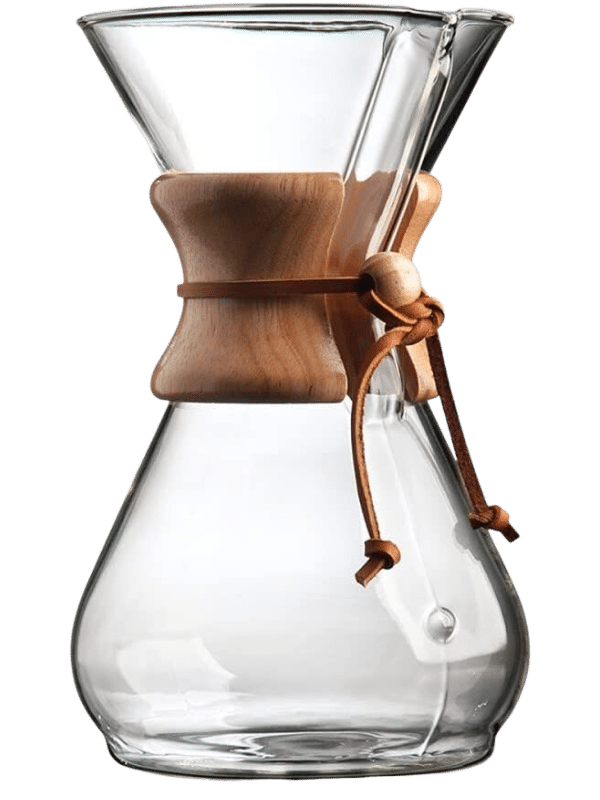
| Price * | ££ |
| Machine Type | Pour-over |
| Dimensions | 24 × 16.25 × 22.8 cm (D, W, H) |
| Water Reservoir Size | 8 cups |
| Material | Glass |
| Warranty | 1 year |
Pros
- Produces clean, pure coffee flavor.
- Elegant, timeless design enhances kitchen decor.
- Durable, high-quality borosilicate glass construction.
Cons
- Requires specific Chemex filters.
- Brewing process can be time-consuming.
- Not suitable for making single cups.
The Chemex is best suited for coffee lovers in the United Kingdom who appreciate the art of manual brewing and the rich, clean flavors it produces. It’s also an excellent centerpiece for a modern kitchen and a conversation starter for those who appreciate design and coffee.
It’s a pour-over coffee maker with a cone-shaped design. It helps extract more flavors than drip coffee makers, but you add the water. You could get a machine that’ll automatically pour water over the Chemex, but that runs the risk of having plastic.
Its timeless design and its ability to produce a high-quality brew make it a worthwhile investment for the discerning coffee enthusiast.
The Chemex is just a giant glass jar. It has no special features other than offering a clean taste and a beautiful design.
However, it uses borosilicate glass, which withstands heat well. Meaning, it won’t shatter.
Brewing will take a while because it requires time and effort to master your pouring technique. But you must make sacrifices if you truly want a plastic-free coffee maker. It’s also not ideal for making single cups.
Since it’s a large carafe, it’s meant for groups. Unless you add enough water for only 1 person.
How to Pick the Best Plastic/BPA-free Coffee Maker: Buyer’s Guide
Here’s how to pick an amazing BPA-free coffee maker:
| Criteria | Importance |
| Size | Determines how much counter space the coffee maker will occupy. |
| Machine Type | Different machine types (like drip, single serve, espresso) affect taste & preparation time. |
| Materials | BPA alternative used in machines. |
| Ease of Cleaning | A maker that’s easy to clean promotes better hygiene, enhances coffee taste, & extends the machine’s lifespan. |
| Water Reservoir Size | Dictates how many cups of coffee can be made at once. |
| Features | Adds convenience & customization to your coffee experience. |
The following sections will provide details on each criterion.
1. Size
Dimensions affect not only the product’s functionality but also its integration into your kitchen environment.
A large coffee maker can brew multiple cups simultaneously, ideal for a busy household or office. Yet, it also demands more counter space, which might only be available in some kitchens.
Small kitchens often lack ample counter space. Therefore, coffee makers with compact designs become a necessity. These models tend to be single-serve or make fewer cups per brew. But their small stature doesn’t mean they compromise on quality or features.
Many compact coffee makers are BPA-free and have various brewing options, temperature controls, and programmable timers.
Measure your available space before buying a coffee maker. This ensures your new appliance will fit comfortably in your kitchen without causing clutter or inconvenience.
2. Type
Different types offer unique benefits.
Take drip coffee makers; they provide convenience and brew large volumes, making them great for coffee lovers who need a quick cup in the morning. French press coffee makers give you control over brewing time, delivering a more personalized flavor.
Espresso machines offer sophistication with their strong, robust flavors and frothy crema on top. Single-serve pod machines are ideal for speed and simplicity.
Each type of coffee maker has a distinctive set of advantages. Make an informed choice based on your coffee preferences, lifestyle, and the volume of coffee you consume.
3. Materials
Different BPA-free materials have unique benefits.
Stainless steel stands out for its robustness and ability to maintain temperature. But, if you prioritize flavor, consider glass. It’s non-reactive and doesn’t affect taste.
4. Ease of Cleaning
A well-designed machine simplifies cleaning, saving you time and effort. Some offer removable components, making deep cleaning a breeze. You can detach these parts, scrub them thoroughly, and restore them with minimal fuss.
A coffee maker that’s easy to clean ensures a fresh and flavorful brew every time. It also prolongs the machine’s life, saving you from frequent replacement costs..
5. Water Reservoir Size
Size matters when selecting a BPA-free coffee maker, especially the water reservoir size.
If you’re a heavy coffee drinker or often entertain guests, a larger reservoir, say 72 to 96 ounces, saves you the hassle of frequent refills. A larger size might mean a bulkier machine that takes up more kitchen space.
Smaller reservoirs, ranging from 12 to 40 ounces, offer compactness. Ideal for single users or those with smaller kitchens, these models require frequent refills, but their reduced footprint is a trade-off worth considering.
The average BPA-free coffee maker comes with varied reservoir sizes.
6. Functionality & features
When selecting the best BPA-free coffee maker, the functionality and features it offers should become a top consideration.
Such attributes allow the device to serve your unique needs effectively and efficiently. A good feature set extends beyond mere brewing to include aspects that simplify your experience and enhance the coffee’s taste.
Compare these potential features:
- Programmability: Schedule your brew ahead of time for a fresh cup of coffee right when you need it.
- Strength Control: Customize your brew strength to cater to individual preferences.
- Auto-Shutoff: Save energy and ensure safety with an automatic shut-off feature.
- Thermal Carafe: Keep your coffee warm for longer periods without overcooking it.
- Built-in Grinder: For the freshest taste, grind your own beans right before brewing.
Scrutinize these features and choose a model that makes your coffee experience effortless and enjoyable.
Types of BPA-Free Coffee Makers
Here are all the different types of coffee makers you’ll find that offer BPA-free bodies and components:
| Coffee Maker Type | Average Maker Price * | Best For |
| AeroPress | $31.95–$49.95 | Portability |
| Espresso Maker | $100–$5,000 | Coffee-shop- quality beverages |
| Drip Coffee | $50–$250 | Quick & affordable coffee |
| Thermal Coffee maker | $50–$300 | Keeps drinks hotter longer |
| Clever Dripper | $25–$61.99 | Balance & simplicity |
| Stovetop | $18.99–$99.95 | Simplicity |
| Phin | $17.99–$30 | Camping |
| Cold brew | $27–$65 | Smoothness & low acidity |
| Pour-over | $14–$50 | Control |
| Nel drip | $7–$28.25 | Low-cost |
| French Press | $16.99–$32.99 | Beginners |
Here are your options for electric coffee makers:
- Drip/pour-over
- Thermal coffee maker
- Semi-automatic, automatic, & super-automatic espresso makers
- Stovetop maker
These coffeemakers work best for automating coffee making at home. If you’re looking for something for camping, consider clever drippers and French presses. Use manual pour-over coffee makers, nel drips, a phin, or an AeroPress for traveling.
Plastic Coffee Makers & BPA: Concerns & Safety
BPA stands for ‘Bisphenol A’ and is one of the main components for manufacturing many plastic goods. BPA helps plastic harden and keeps it clear and shiny.
However:
There are a lot of studies confirming that long-term exposure to BPA has a lot of adverse health effects, such as:
- Hormonal imbalance: Bisphenol A is a xenoestrogen, which means that it can mimic the effects of body estrogen & bind with estrogen receptors.
- Long-term exposure to BPA in the environment can be connected to inducing hyperprolactinemia & certain types of cancer.
- These correlations have only been made in animal studies so far, but scientists think that humans can be susceptible to the effects of BPA too [1].
- II Type diabetes: Studies also suggest that long-term exposure to the BPA can trigger insulin resistance [2], which is the main factor for type II diabetes & obesity.
- Heart problems: Science has confirmed the connection between exposure to Bisphenol-A & heart disease.
- According to a 13-year epidemiological study, bisphenol exposure acted as one of the predictive factors for cardiovascular disease in more than 91% of cases [3].
- Fertility problems: BPA is linked to disruption in the reproductive system, specifically in men.
- Studies suggest that exposure to this chemical may result in lower urinal concentration of the reproductive hormones, as well as in worsening of the semen quality [4].
FDA has stated that bisphenol A is safe in small doses. However, its volatility increases with heat. If essential parts of your coffee machine—or the parts that are in direct contact with hot water and coffee—are made of plastic, you will get increased exposure.
Identifying BPA in Your Coffee Maker
So, how do you find out if the plastic parts of your coffee maker contain bisphenol? There are several simple ways:
- Check the labeling: Marking for BPA isn’t mandatory in the US, but coffee machine brands with a good reputation typically place it on plastic parts.
- If you cannot find the marking or still aren’t sure, proceed to the next steps.
- Look at the color of plastic and its transparency: BPA is typically used for making hard & clear plastics that are safe for microwaving or freezing.
- If your coffee maker has plastic parts that are opaque, black, or colored, there’s a high chance that they’re made from another type of plastic.
- Look at the marking numbers: Many plastic parts are suitable for recycling, & those are marked with different numbers inside the ‘chasing arrows’ symbol [5].
- You should specifically be aware of the number 7, which includes plastics that cannot always be recycled, & some of these plastics may contain BPA.
- If the said plastic part doesn’t have contact with water, heating tank, or coffee grounds, it might be fine to use the coffee maker.
Some BPA-free models can use chemical substitutes, which you should be aware of as well. Such chemicals as BPS and BPF have a similar structure as BPA, which can potentially make them cause the same effects [6].
Pay attention to the water reservoir and coffee filter basket. These parts come in direct contact with your coffee, which means they can release BPA (if they contain any).
If you aren’t sure whether those parts are BPA free—or can’t find the info on the product’s page—contact the manufacturer.
FAQs for BPA-free Coffee Makers
Read on to find frequently asked questions about BPA-free coffee makers.
How to Know if a Coffee Maker Is BPA Free?
Typically, manufacturers mention this info on their product page. You can also check the labeling on the coffee machine’s plastic parts. If it says “PC” or “7”, chances are the plastic contains BPA
Are BPA Free Coffee Makers Safe?
Yes, BPA free coffee machines are generally considered to be safe.
Are All Mr. Coffee Makers BPA Free?
Yes. According to the manufacturer, all Mr. Coffee makers are BPA free.
Is the Ninja Coffee Maker BPA Free?
Yes, all Ninja coffee makers are BPA free.
Are Stainless Steel Coffee Machines BPA-Free?
Absolutely, stainless steel is a BPA-free material, and if you find a coffee maker with stainless steel gear, you should be fine.
However, some stainless steel coffee makers still feature plastic parts, so be sure to check if they are made of BPA-free plastic.
Are Stainless Steel or Glass Coffee Machines Better?
It all boils down to your personal preferences and preferred brewing method. For example, if you prefer Moka pot coffee, then most of them are made of steel or metal.
The French press is a glass vessel, so there’s also only one option for you if you like this type of brew.
Does BPA-Free Mean Plastic Free?
No, BPA-free doesn’t mean plastic-free [7]. BPA, or Bisphenol A, is a chemical often used in plastic production.
Our Verdict
Here are the best 3:
- Breville Grind Control Coffee: Includes grinder, high-quality build, & has many programmable features.
- Bialetti Moka Pot: The Bialetti Moka Pot perfectly matches the adventurous soul who enjoys brewing coffee in the great outdoors.
- Farberware Percolator: The Farberware Electric Percolator is ideal for those who prefer stainless steel appliances for their durability and ease of cleaning.
The Breville Grind Control has a competitive price due to its stainless steel body and grinder. Moreover, the additional features (e.g., strength control) allows you more control over black coffee drinks.
Footnotes:
* Price will vary by model, manufacturer, and vendor.

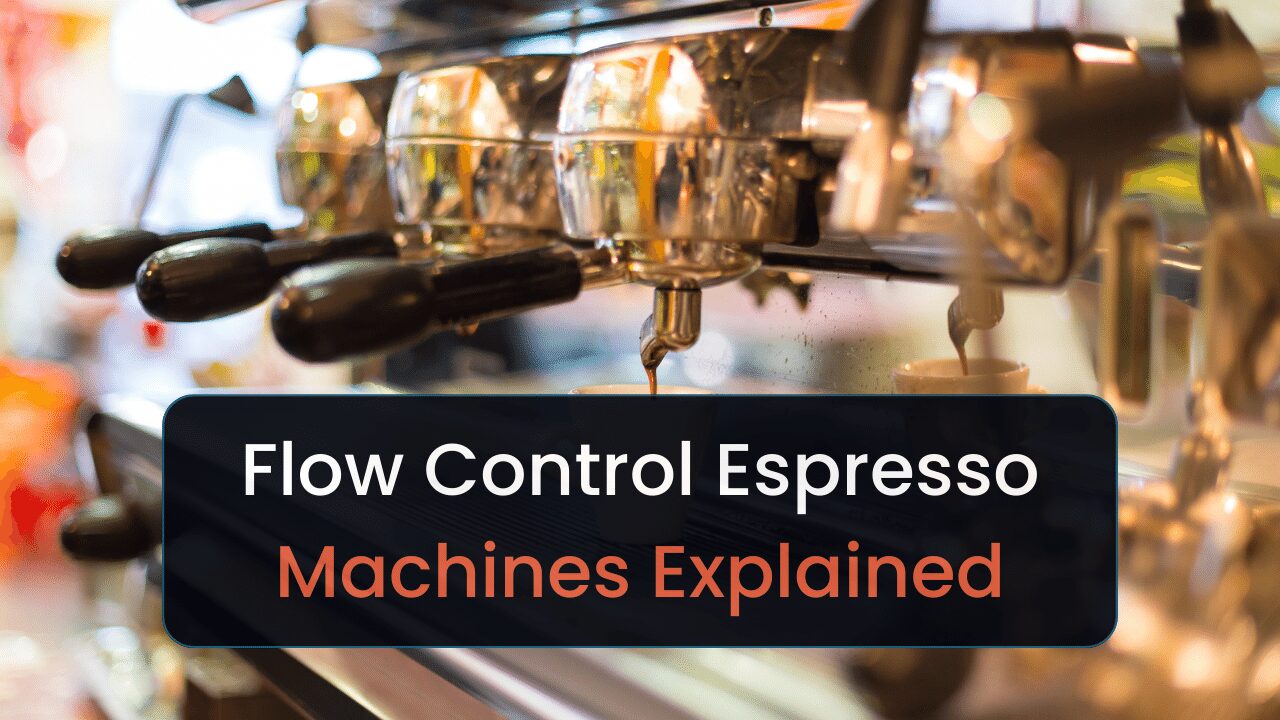
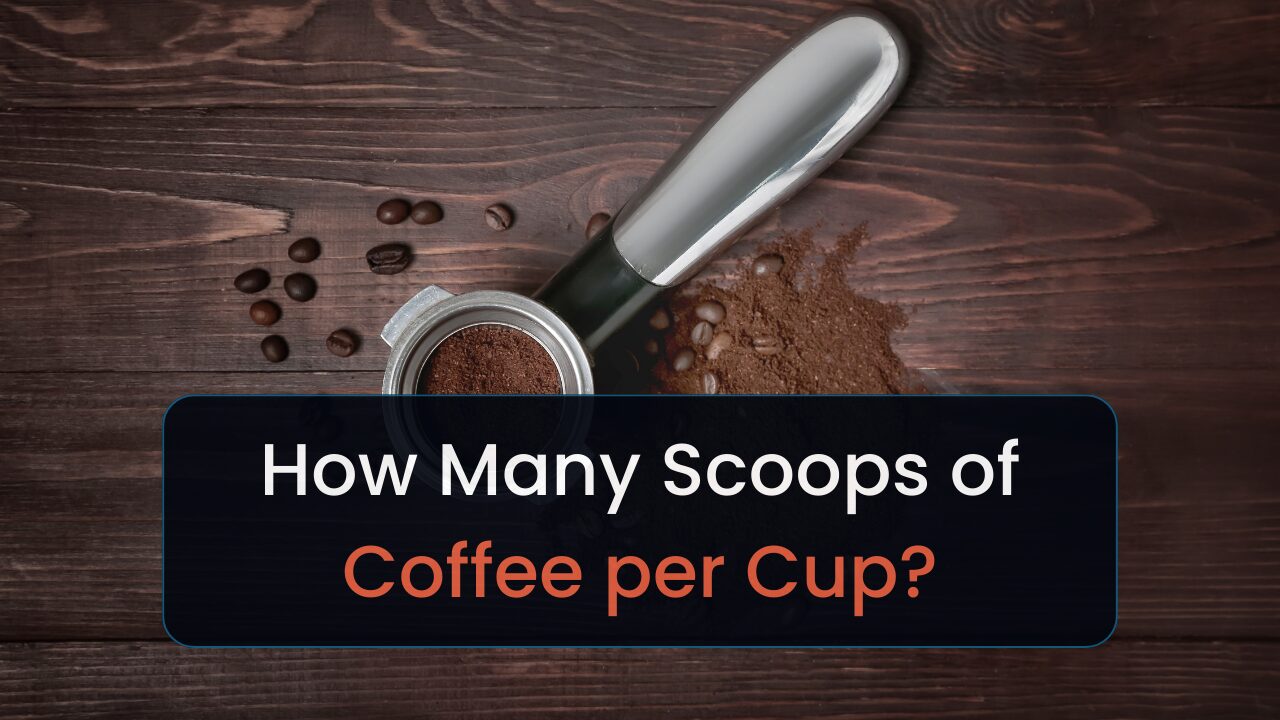
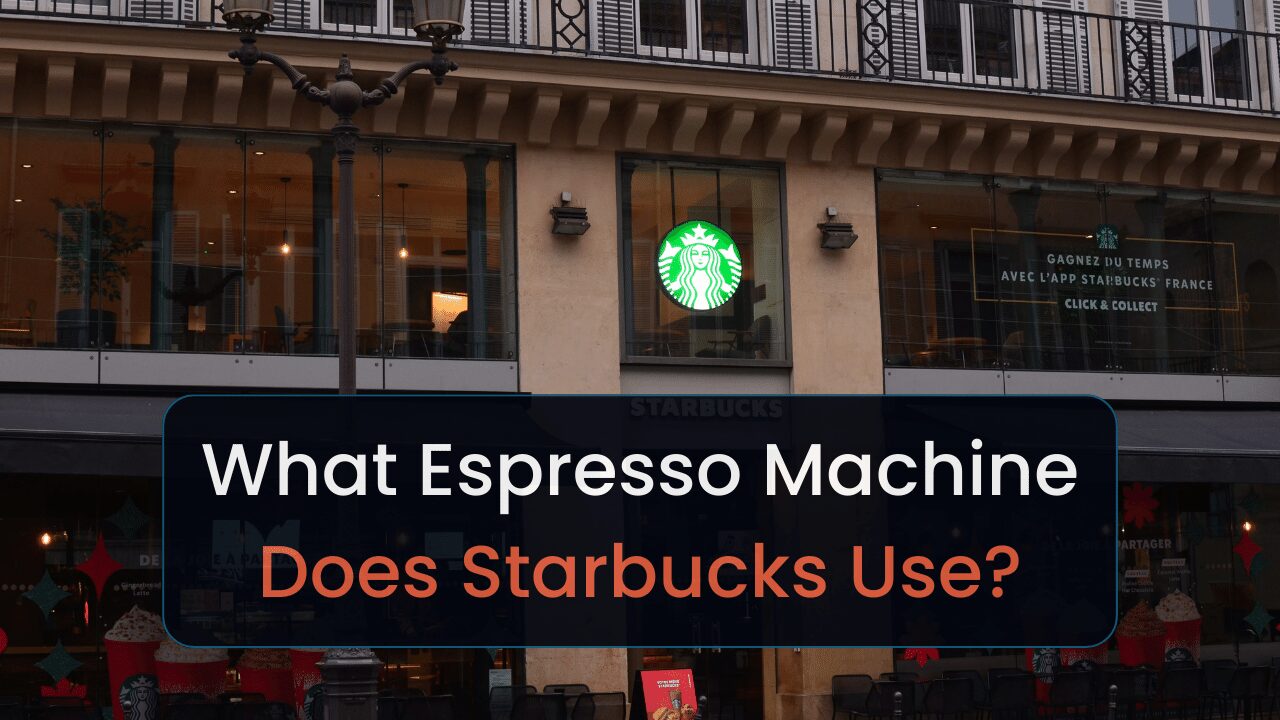
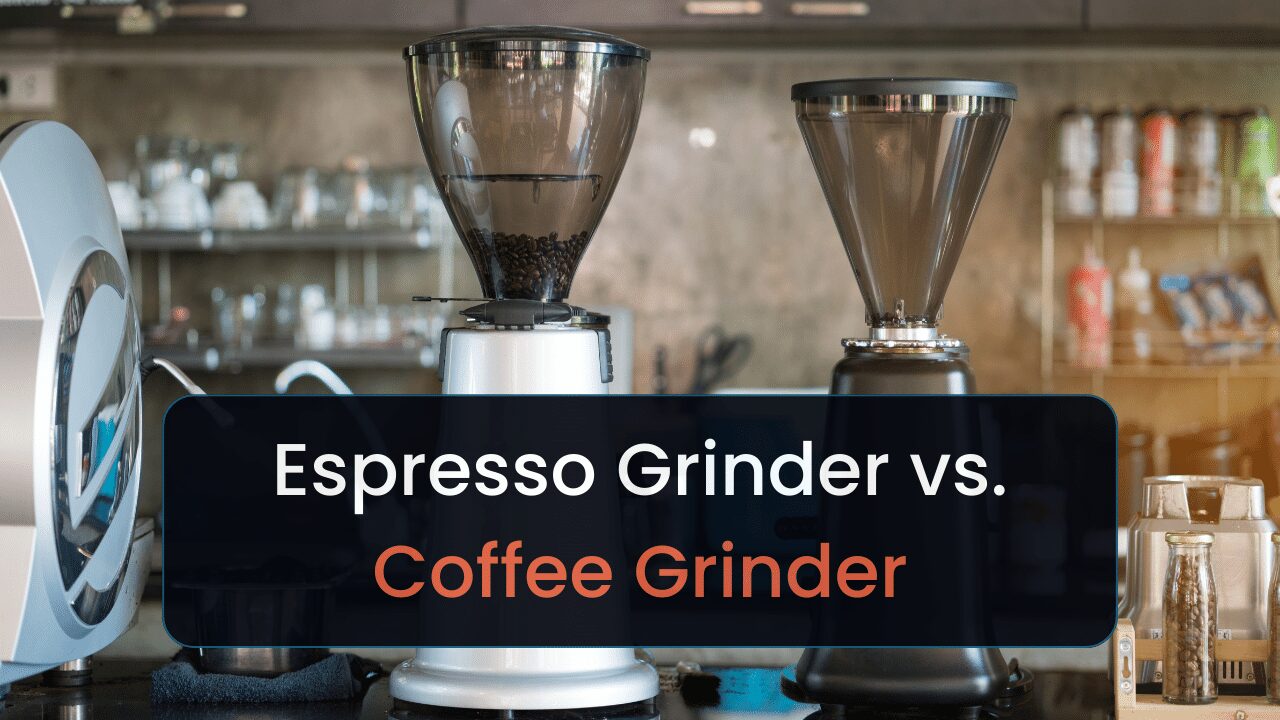
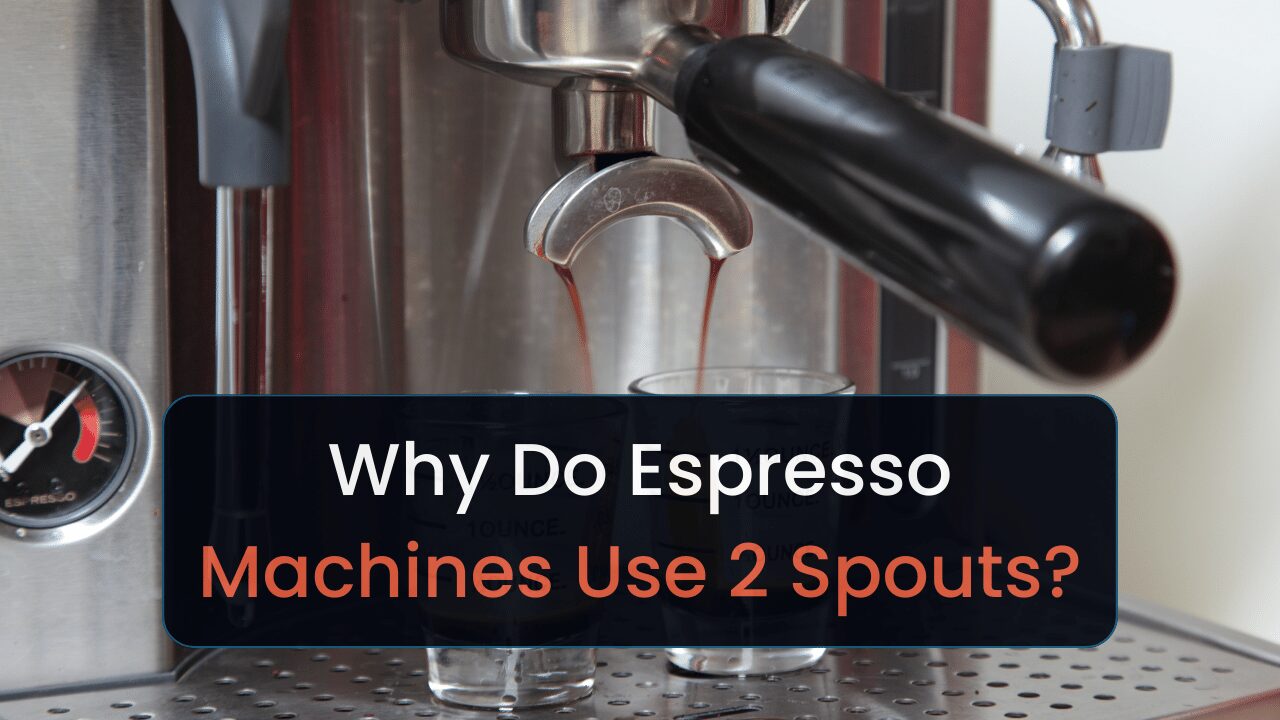
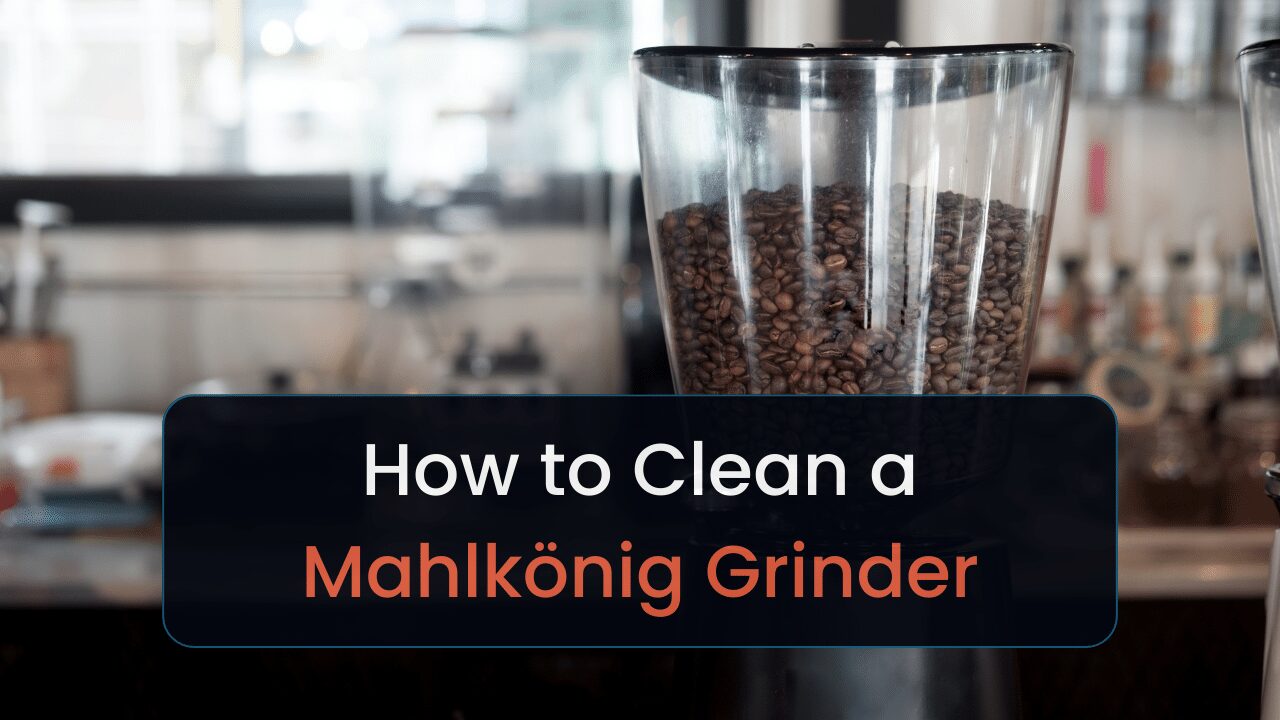
Very helpfull, thank you
Good to hear!
The thoughtful information on plastic-free espresso makers available at Timscoffee.com is great! It is great to see that choosing espresso equipment includes consideration for sustainability. Keep up the appropriate work.